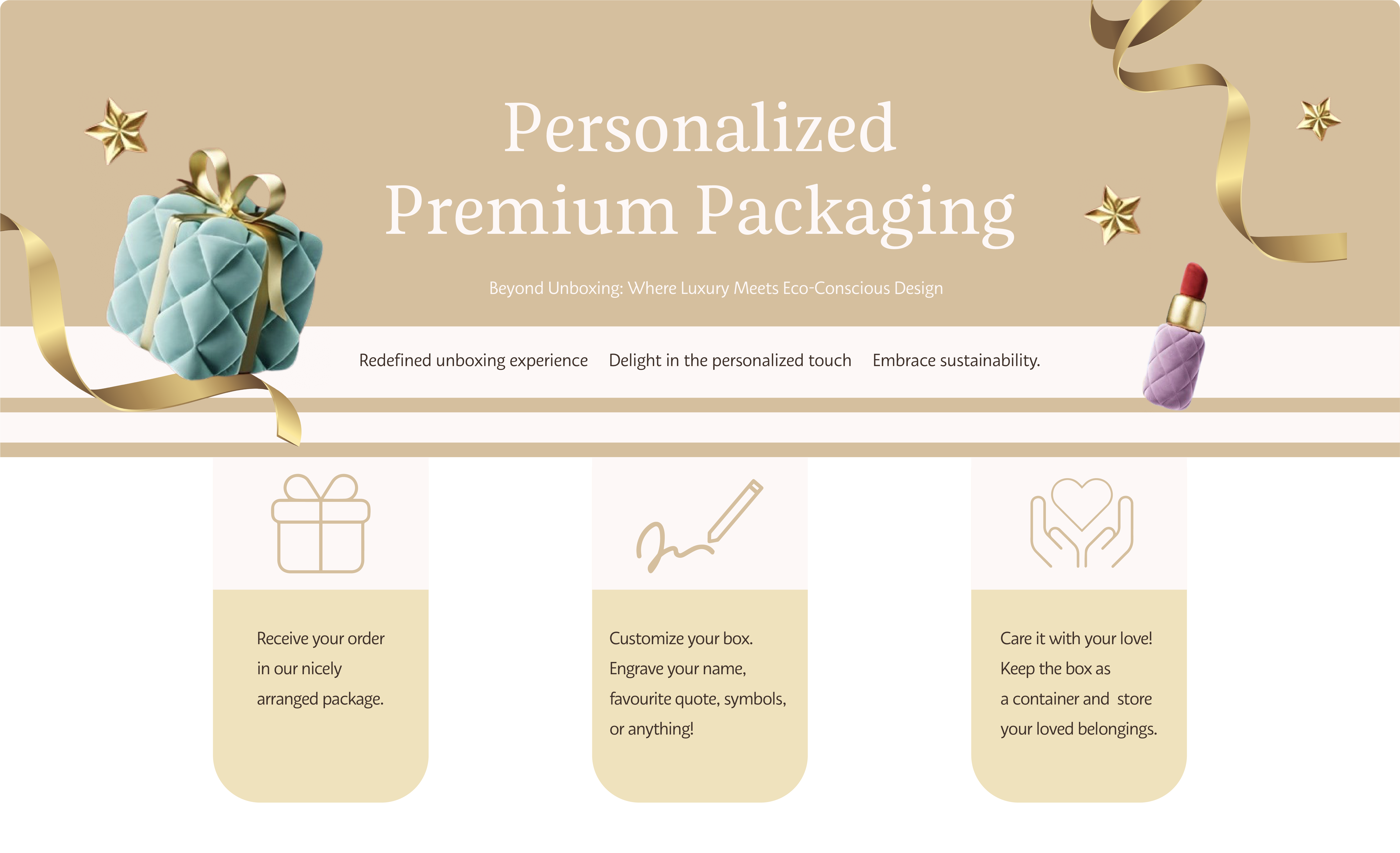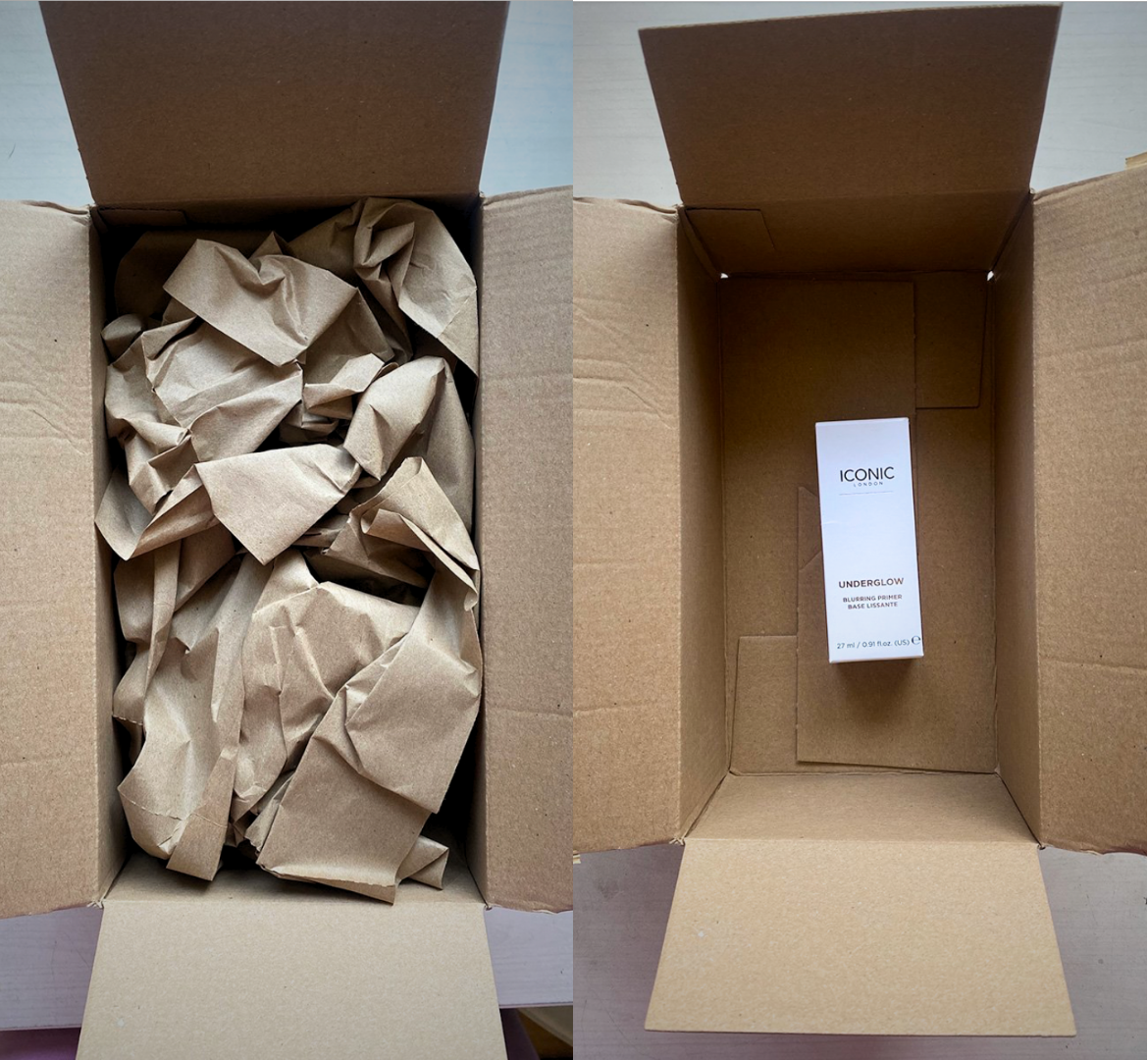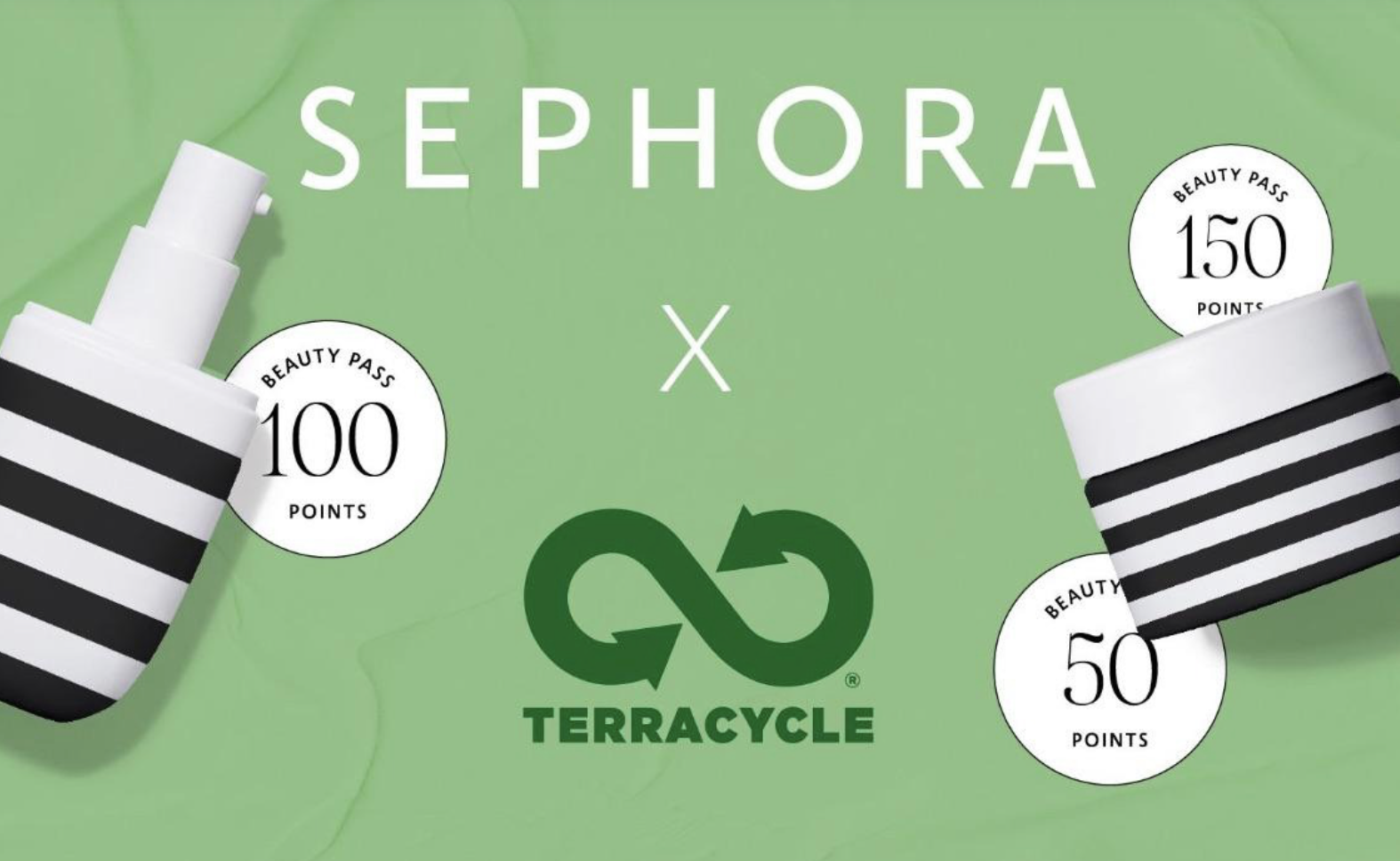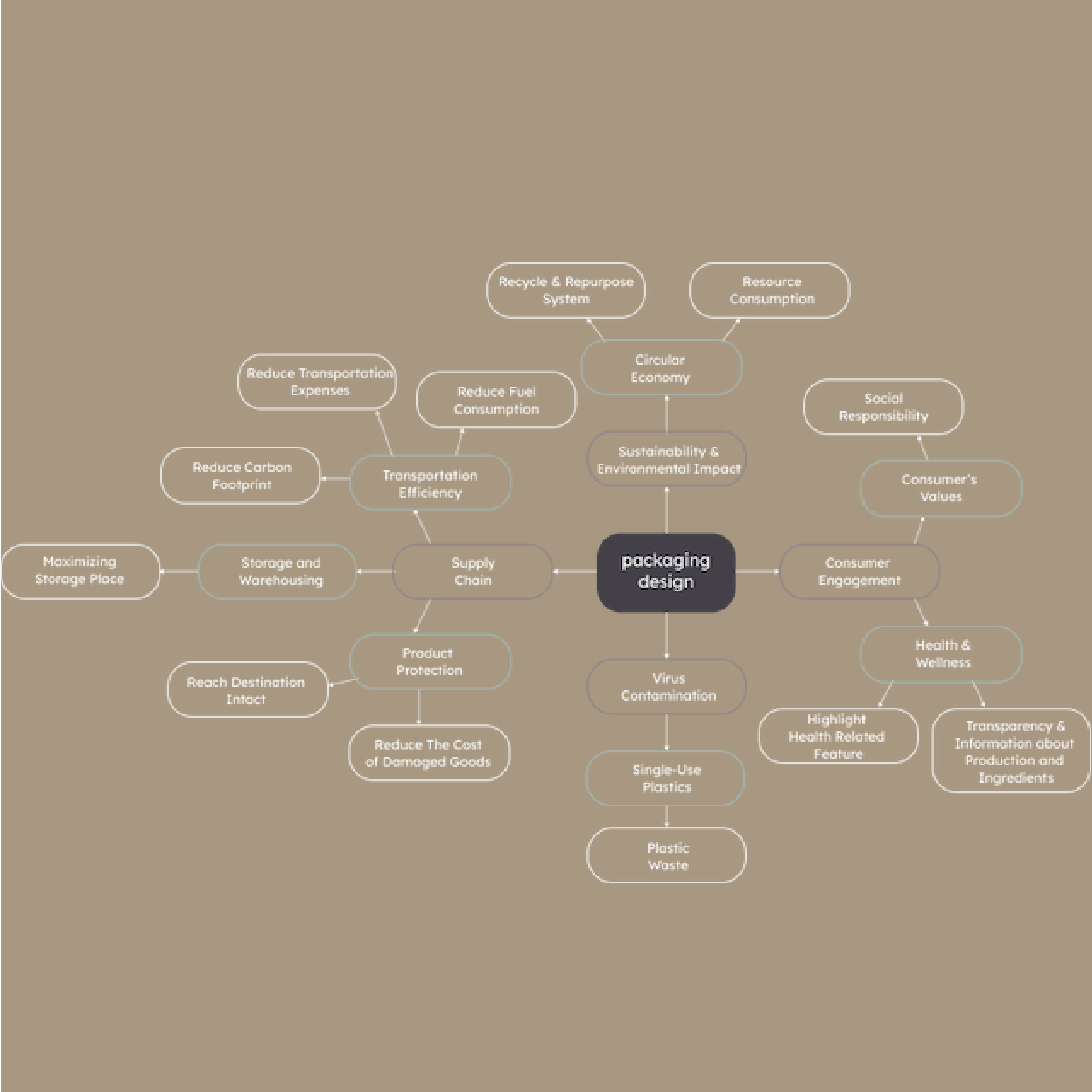We redesigned Sephora's secondary packaging and developed new programs to promote eco-friendly practices and enhance customer expectations.

"Rethinking Packaging for a Sustainable, Engaging Future"
The way consumers interact with brands is evolving. With the rise of e-commerce, packaging is no longer just about delivering a product—it's about delivering an experience. With the interest in Beauty and the habits of online shopping, it leads us to rethink about the unboxing experience of Sephora's online service. Our goal was to redesign Sephora's secondary packaging to reflect its brand identity, reduce waste, and create an unforgettable unboxing experience.
Where Luxury Meets Sustainability: Transforming Sephora's secondary packaging to redefine the unboxing experience.

Practice Sustainability and Feel Pretty

Upgrade your unboxing experience!
New shipping box design to reduce waste!
Return, Earn, and Grow


Where Luxury Meets Sustainability
Have you ever received a package like this?

Cardboard Waste Surges with E-commerce Growth—A Growing Environmental Concern
The rise of e-commerce has drastically increased household cardboard waste, shifting the burden from retail stores to individual homes. Recycling facilities like Recology report a surge in smaller-sized cardboard boxes, a direct result of online shopping’s convenience-driven packaging. However, consumers often fail to recycle properly due to confusion, leading to more waste ending up in landfills. This "trash of convenience" highlights the urgent need for sustainable solutions in packaging.
Woola analyses 42 standardized packaging from big scale e-commerce companies, including Amazon, Sephora, and Rituals:
50% of the packages were oversized.
50% of the packages were not recyclable.
Only 2 out of 42 used circular packaging (return program).
Limited to printed logo as brand identity.
Expand the Sustainability Practices

It's not just a box
Packaging design impacts more than just the product it contains. We mapped out the areas of impact and visualied how we can improve sephora's secondary packaging system and make meaningful impacts.

We conducted a survey with 17 respondents to collect general statistics and their experience with Sephora's secondary packaging. The majority of respondents are female between the age of 20-28, with most of them being Sephora's repeat customers.
Our survey reveals a disconnect between Sephora’s online shopping and unboxing experience; while respondents appreciated the shopping process, technical performance and delivery impacted satisfaction. Many found the secondary packaging underwhelming and would value better presentation, highlighting an opportunity to redesign.
Companies main goal is to ensure product protection and cost-efficiency.
We conducted interviews with 2 subject matter experts (SME) to gain insights into the current packaging methods and challenges faced by the company.
There is a recognition of the need for improvement in the packaging system, but the current method is deemed the most economical. QBER attempted to use eco-friendly materials like honeycomb paper but was limited due to higher costs and storage difficulties.
Tailored to the product size (done through drop testing).
Packaging multiple units of the same product in one box, with customized packaging tailored to the product's size and surface finish, including the selection of appropriate protective materials.
- Higher Costs: The use of more eco-friendly materials is often more expensive, limiting their adoption.
- Storing Challenges: Storage difficulties arise with different packaging materials, especially when aiming for environmentally friendly options.
User Research

These criteria are essential for the success of the new packaging design and cannot be compromised.
These criteria can be adjusted depending on feedback, costs, or logistical challenges.

ISSUES OF SEPHORA'S CURRENT PACKAGING
Develop programs that are environmentally conscious while also aligning with customer expectations.
after doing the research, we narrowed down the design intent to the following:
Reflecting Sephora's brand identity to address environmental issues.
Encouraging customer retention and loyalty through sustainable packaging initiatives.
Reducing waste from oversized packaging to minimize environmental impact.
Creating packaging with aesthetic appeal and durable materials to extend the packaging's shelf life.
New Packaging Design

Usability Testing
We conducted usability testing with 10 participants in the target demographic to evaluate the user experience of our service system.
Customers are required to pay a refundable deposit for the packaging when they place the order. This deposit is returned to them once the packaging is sent back in good condition.
Users were uneasy about having extra money deducted from their bank account, feeling burdened by the responsibility to return the box in perfect condition.
Testers were anxious about possibly losing their deposit.
The deposit system added stress, making users feel obligated and detracting from the shopping experience.
Instead of paying a deposit, customers are compensated or rewarded with pointsbased on the condition of the box when they return it.
Users preferred this system as it eliminates the anxiety of an upfront cost.
Earning rewards or points for returning packaging motivates users, making them more likely to engage with the program.
This is the very first case study that I worked on in the context of service design. The design and research process was a challenging yet enlightening experience. I learned how to empathize with users and how to conduct more refined user research. As well as the methodology to interview subject matter experts and conduct a survey.